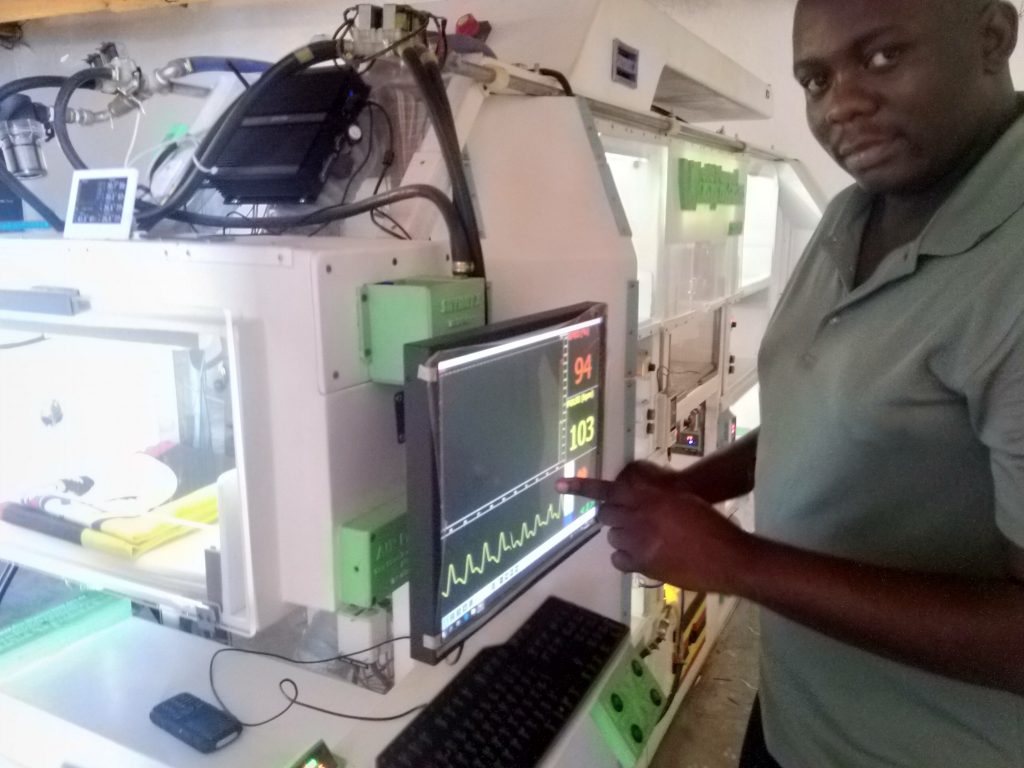Ugandan engineer Christopher Nsamba died at the age of 33.
Sources reveal that Nsamba has been battling diabetes, and over the weekend he was rushed to Victoria Hospital in Bukoto. Unfortunately, he was pronounced dead on Sunday.
“The management of the ministry of health is deeply saddened by the passing of Mr. Christopher Nsamba; known for his innovation and installation of 10 baby incubators at Kawempe and Mukono Hospitals. Other innovations are drones, and baby ICUs for ambulances. May his soul rest in eternal peace,” reads a statement from the ministry of health.
Nsamba, who was the founder and director of the African Space Research Program is known for his innovation and installation of the world’s largest incubator, dubbed SAVANT X.
He largely built this high-tech machine on his own, and it can carry and work on 10 babies at a go. His incubator has saved thousands of premature-born kids in Uganda.
Other innovations are drones, and baby ICUs for ambulances.
He was the winner of the Innovation of the Year award for the Heroes In Health Awards 2021.
Here are some of the specifics of the incubator:
This incubator understands and can make decisions in case of an emergency when medical personnel is not close by.
It carries 10 babies at once, in 10 different chambers.
Some babies get brain injuries (Twitches) during birth and they end up with continuously moving body parts, when it is not the baby doing it, for example, the baby can have the hand move back and forth continuously; this can cause the baby to become so tired and die. The machine has a technology which fixes damaged brain cells for neonates.
Some babies delay to breath upon delivery and get dead brain cells, if they survive, they become mentally disabled. This machine has a technology which stops brain cells from dying off if the baby is loaded as quickly as possible.
Normally, oxygen is delivered to babies through tubes which they bypass over the nose, this machine can deliver oxygen wireless to the baby, without any tubes attached to the nose. Nsamba discovered some babies are really irritated by this conventional way of oxygen delivery, so the machine delivers oxygen wireless.
The machine is loaded with a server customised through custom-made software to be able to read the 1087 sensors deployed on board, to understand, interpret them and call out decisions accordingly, in case this machine is confused about a decision to take, it will be able to communicate to the international paediatric network, for further advice in case no local medical personnel can save a baby, and when it is trying to do so by itself.
It is designed with a heat bank which stores heat so, in case of a power failure outage, this machine continues operation as normal. When power is off, sensors, servers and much more pick power from the secondary 1, secondary 1A, and primary 1A BUSS backups, and picks heat from its heat bank, all sensor and software governed. In short, it remains fully functional when power is off and can warm all the 10 babies at individually set temperatures for six days without power; sustaining full functionality.
This machine remembers faces of those that work on it, if someone whom it doesn’t know attempts to remove a baby, it will lock all cabins and call the Head of the Department on phone, if it is fine, he/she just answers the phone and says, override. Then it will allow the new person to reach the baby, if the Head of Department thinks it is an intruder, on phone he/she says arrest. It will even lock the room doors where the incubator is so that the intruder does not escape, then continue having all the 10 babies locked into it.
In case of a fire, this machine can cut off smoke from reaching the babies, and it 100% supports them on the auxiliary oxygen buss.
